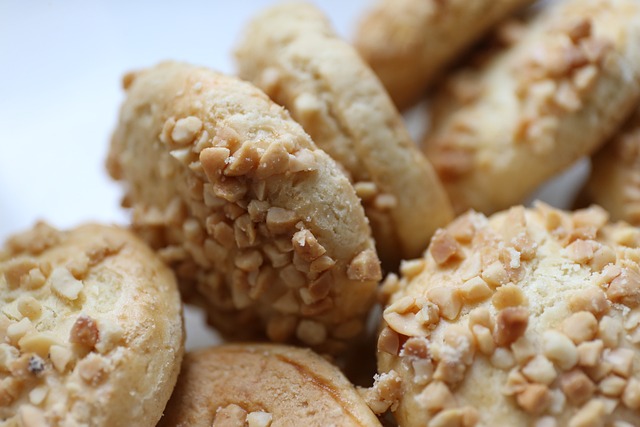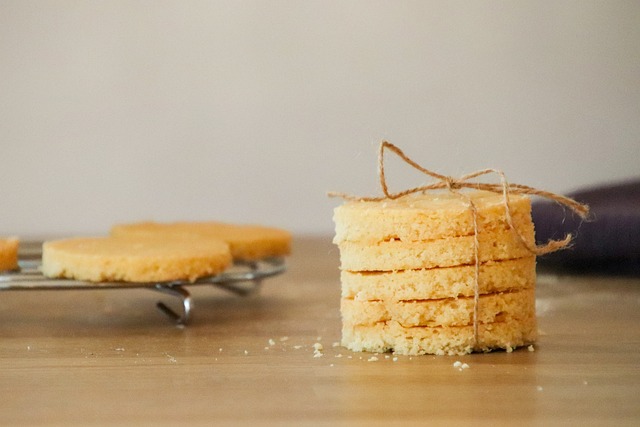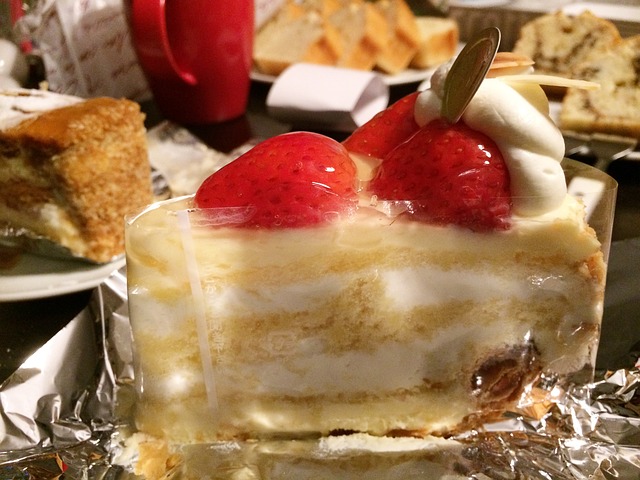Shortbread is a crumbly, buttery sugar, butter, and flour cookie. Shortcake refers to a sweet, soft biscuit often used for desserts like strawberry shortcake, made from sugar, butter, flour, baking powder, and liquid. Shortbread and shortcake, both popular desserts, frequently cause confusion due to their similar names.
Although they might sound alike, these two delicacies have clear discrepancies regarding ingredients, preparation, and texture. So, what is the difference between shortbread and shortcake? Shortbread is a traditional Scottish cookie known for its rich, buttery taste and crumbly texture.
On the other hand, shortcake is a sweet biscuit-like cake that is typically served with fresh fruits and whipped cream.
What is the Difference Between Shortbread and Shortcake?

Figuring out the distinction between shortbread and shortcake holds significance for both culinary enthusiasts and consumers. Understanding these differences allows individuals to appreciate the unique characteristics of each dessert.
Here’s a comparison table highlighting the multiple key shortbread vs shortcake:
| Aspect | Shortbread | Shortcake |
|---|---|---|
| Composition | Butter, sugar, flour | Flour, sugar, butter, cream |
| Texture | Crumbly, dense | Tender, soft, slightly crumbly |
| Flavor | Buttery, mildly sweet | Sweet, often with fruit |
| Leavening agent | None | Baking powder or soda |
| Typical Variations | Plain, flavored (e.g., lemon, chocolate) | Often used as a base for berries and whipped cream |
| Usage | Often served alone or with tea/coffee | Usually serves as a base for fruit and whipped cream |
| Common Treats | Scottish shortbread, petticoat tails | Strawberry shortcake |
| Presentation | Cut into shapes or bars | Split and layered with fruit and cream |
| Country of Origin | Scotland | United Kingdom (originally) |
| Served Warm or Cold | Cold | Usually cold, but warm if freshly baked |
| Notable Desserts | Millionaire’s shortbread | Strawberry shortcake |
Remember that the specific characteristics of shortbread and shortcake may vary based on regional preferences and individual recipes.
Comparison between shortbread and shortcake
Now, let’s delve deeper into the differences between shortbread and shortcake, exploring various points of distinction
1. Ingredients
Shortbread: Traditional shortbread is made from a simple combination of butter, sugar, and flour. The high butter-to-flour ratio gives it a crumbly, melt-in-the-mouth texture and a rich buttery flavor.
Shortcake: Shortcake typically includes ingredients like flour, sugar, butter, baking powder, and a liquid (usually milk or cream).
Adding baking powder and liquid results in a softer, more tender texture compared to shortbread.
2. Texture
Shortbread: Shortbread has a crumbly, delicate texture due to its minimal moisture content and high butter content. It tends to break or crumble easily and is known for its “short” or tender bite.
Shortcake: Shortcake’s texture is soft and somewhat cake-like, as the name suggests. The presence of baking powder and liquid contributes to its spongy and absorbent nature, making it a suitable base for holding moist toppings like fruits and creams.
3. Culinary Use
Shortbread: Shortbread is often enjoyed on its own as a cookie. It might also serve as a component in certain desserts, but its main appeal lies in its rich buttery taste and crumbly texture.
Shortcake: Shortcakes are specifically designed to serve as a base for desserts. The soft, slightly sweet biscuit acts as a canvas for showcasing toppings like fresh fruits (e.g., strawberries) and whipped cream, creating a well-balanced dessert.
4. Dessert Variations
Shortbread: Shortbread desserts tend to highlight the cookie itself. Variations include dipped or coated shortbread, layered bars with different fillings, or even shortbread crusts for pies and tarts.
Shortcake: Shortcake desserts center around the combination of soft biscuits with various fillings. Strawberry shortcake is a classic example, featuring sliced strawberries and whipped cream atop the biscuit.
Other fruits and toppings can also be used with these elements. Different Types of Shortcake Desserts includes,
- Strawberry Cake,
- Peach shortcake,
- Chocolate Shortcake,
- Mixed Berry Shortcake,
5. Cultural Significance
Shortbread: Shortbread carries cultural significance as a traditional Scottish treat, deeply tied to the country’s heritage. Originating in medieval times, it was initially a luxury enjoyed during festive occasions.
The simplicity of ingredients – butter, sugar, and flour – reflects resourcefulness.
Today, shortbread remains a symbol of hospitality, often served to guests.
Its popularity extends beyond Scotland, showcasing how culinary traditions can embody history, hospitality, and a sense of shared heritage.
Shortcake: Shortcake, especially strawberry shortcake, is more common in Western cuisine. It’s trendy during the summer months when fresh berries are in season.
Besides, Shortcake holds cultural significance as a beloved dessert in various societies.
- In Western cultures, like the United States and Britain, strawberry shortcake is a staple during summer, symbolizing the arrival of warm weather and ripe fruits.
- In Japan, “Ichigo Daifuku” features strawberry-filled mochi, blending local flavors with a twist.
Across these cultures, shortcake represents not only culinary enjoyment but also a connection to seasonal shifts and local ingredients, reflecting the cultural importance of food and traditions.
6. Allergen and Dietary Considerations

Shortbread: Traditional shortbread contains gluten from wheat flour and dairy from butter, making it unsuitable for those with gluten or dairy sensitivities.
Here are the allergen and dietary considerations for shortbread:
- Gluten Sensitivity: Traditional shortbread is made with wheat flour, which contains gluten, making it unsuitable for individuals with gluten sensitivity or celiac disease.
- Dairy Allergies: Shortbread’s main ingredient is butter, which contains dairy. Those with dairy allergies or lactose intolerance should avoid traditional shortbread.
- Nut Allergies: Some shortbread recipes include nuts for added flavor. People with nut allergies should be cautious when consuming such variations.
- Vegan Diet: Traditional shortbread contains dairy butter. However, vegan-friendly alternatives using non-dairy butter can be explored.
- Low Sugar Diets: Shortbread is often high in sugar. Individuals following low-sugar diets should be mindful of their consumption.
Shortcake: Both shortcake and shortbread can be adapted to accommodate dietary restrictions. Gluten-free flours and dairy substitutes can be used to create gluten-free and dairy-free versions of these treats.
Here are some allergen and dietary considerations to keep in mind when it comes to shortcake:
- Gluten Sensitivity or Celiac Disease:
- Traditional shortcakes are made with wheat flour, which contains gluten. Individuals with gluten sensitivity or celiac disease should opt for gluten-free flour alternatives to make the shortcakes.
- Dairy Allergies or Lactose Intolerance:
- Shortcakes often contain butter, cream, or milk. Those with dairy allergies or lactose intolerance should use dairy-free alternatives like margarine, coconut oil, or plant-based milk.
- Egg Allergies or Vegan Diets:
- Some shortcake recipes include eggs. For those with egg allergies or following a vegan diet, egg substitutes like applesauce, mashed bananas, or flaxseed can be used.
- Nut Allergies:
- Nuts might be used as toppings or in fillings. Individuals with nut allergies should avoid these additions or use safe alternatives like seeds, dried fruit, or chocolate chips.
Understanding these distinctions helps to appreciate the unique qualities of each treat and how you can use them in delightful desserts.
FAQs
What is shortbread made of?
Shortbread is made from a simple sugar, butter, and flour mixture. It has a rich, crumbly texture and a buttery flavor.
What ingredients are used in shortcakes?
Typically, a shortcake is prepared using sugar, butter, flour, baking powder, and a liquid like milk or cream. This results in a soft, biscuit-like texture that’s often used for desserts.
How do the textures of shortbread and shortcake differ?
Shortbread has a crisp and crumbly texture due to its high butter content and minimal liquid. On the other hand, shortcake has a softer and more tender texture, similar to a biscuit.
Can shortbread and shortcake be used interchangeably in recipes?
Not usually. The distinct textures of shortbread and shortcake lend themselves to different culinary applications. Shortbread is often enjoyed on its own or as a base for desserts, while shortcake is commonly used to make desserts like strawberries.
How are shortbread and shortcake typically served?
Shortbread is often served as a standalone cookie or as part of a dessert platter. Shortcake is commonly used as a base for layered desserts, such as strawberry shortcake or other fruit-based desserts.
Are there any variations of shortbread or shortcake biscuit recipes?
Yes, both shortbread and shortcake have various recipe variations. Shortbread can include additions like nuts, chocolate, or flavorings, while shortcake recipes might incorporate different fruits or toppings.
Can you use the same baking techniques for shortbread and shortcake?
No, shortbread and shortcake require different baking techniques due to their distinct textures and ingredients.
While both involve baking, the techniques differ due to their distinct textures. Shortbread is typically pressed into a pan and baked until golden, while shortcake dough is often dropped or shaped into biscuits before baking.
Can shortbread and shortcake be made gluten-free or dairy-free?
Yes, both shortbread and shortcake can be made gluten-free and dairy-free using alternative flour (like rice flour, almond flour, or gluten-free flour blends) and dairy substitutes (such as plant-based margarine or non-dairy milk).
Conclusion
The main difference between shortbread and shortcake lies in their textures and intended uses. Shortbread is a buttery and crumbly treat that is often enjoyed on its own or used as a base for desserts. On the other hand, a shortcake is a moist and tender cake typically served with fresh fruits and whipped cream.
While both are delicious, shortbread is a more delicate and versatile option, while shortcake is a perfect choice for a fruity and satisfying dessert.











